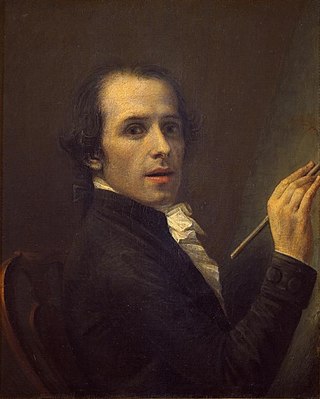
Antonio Canova was an Italian Neoclassical sculptor, famous for his marble sculptures. Often regarded as the greatest of the Neoclassical artists, his sculpture was inspired by the Baroque and the classical revival, and has been characterised as having avoided the melodramatics of the former, and the cold artificiality of the latter.

Sir John Everett Millais, 1st Baronet, was an English painter and illustrator who was one of the founders of the Pre-Raphaelite Brotherhood. He was a child prodigy who, aged eleven, became the youngest student to enter the Royal Academy Schools. The Pre-Raphaelite Brotherhood was founded at his family home in London, at 83 Gower Street. Millais became the most famous exponent of the style, his painting Christ in the House of His Parents (1849–50) generating considerable controversy, and he produced a picture that could serve as the embodiment of the historical and naturalist focus of the group, Ophelia, in 1851–52.
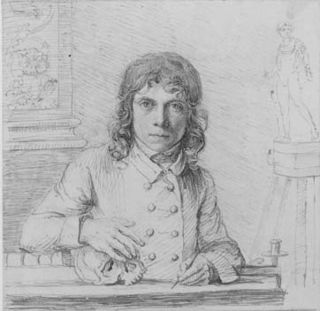
John Flaxman was a British sculptor and draughtsman, and a leading figure in British and European Neoclassicism. Early in his career, he worked as a modeller for Josiah Wedgwood's pottery. He spent several years in Rome, where he produced his first book illustrations. He was a prolific maker of funerary monuments.

Frederic Leighton, 1st Baron Leighton,, known as Sir Frederic Leighton between 1878 and 1896, was a British painter, draughtsman, and sculptor. His works depicted historical, biblical, and classical subject matter in an academic style. His paintings were enormously popular, and expensive, during his lifetime, but fell out of critical favour for many decades in the early 20th century.
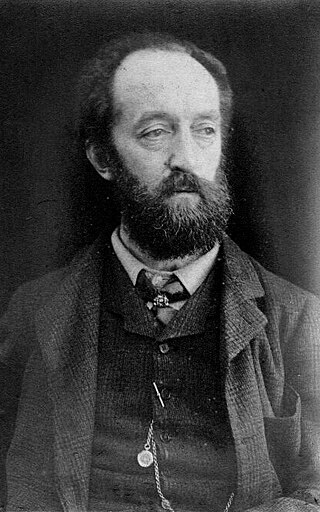
Henry Holiday was a British historical genre and landscape painter, stained-glass designer, illustrator, and sculptor. He is part of the Pre-Raphaelite school of art.
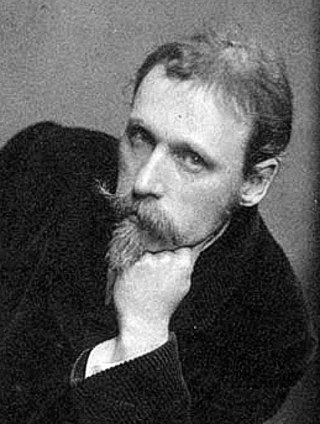
Walter Crane was an English artist and book illustrator. He is considered to be the most influential, and among the most prolific, children's book creators of his generation and, along with Randolph Caldecott and Kate Greenaway, one of the strongest contributors to the child's nursery motif that the genre of English children's illustrated literature would exhibit in its developmental stages in the later 19th century.

Sir Alfred Gilbert was an English sculptor. He was born in London and studied sculpture under Joseph Boehm, Matthew Noble, Édouard Lantéri and Pierre-Jules Cavelier. His first work of importance was The Kiss of Victory, followed by the trilogy of Perseus Arming, Icarus and Comedy and Tragedy. His most creative years were from the late 1880s to the mid-1890s, when he created celebrated works such as a memorial for the Golden Jubilee of Queen Victoria and the Shaftesbury Memorial Fountain.

Randolph Caldecott was a British artist and illustrator, born in Chester. The Caldecott Medal was named in his honour. He exercised his art chiefly in book illustrations. His abilities as an artist were promptly and generously recognised by the Royal Academy. Caldecott greatly influenced illustration of children's books during the nineteenth century. Two books illustrated by him, priced at a shilling each, were published every Christmas for eight years.
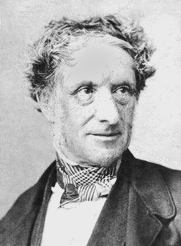
Sir Richard Westmacott was a British sculptor.
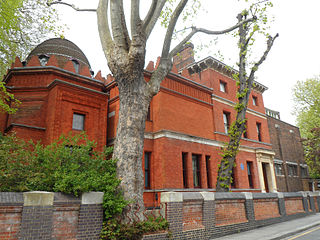
The Leighton House Museum is an art museum in the Holland Park area of the Royal Borough of Kensington and Chelsea in west London.

Augustus Charles Pugin was an Anglo-French artist, architectural draughtsman, and writer on medieval architecture. He was born in Paris, then in the Kingdom of France, but his father was Swiss, and Pugin himself was to spend most of his life in England.

Harold Edward Hughes Nelson, usually known simply as Harold Nelson, was an artist, illustrator, designer of bookplates, advertisements and postage stamps, copper etcher and engraver, and lecturer. He signed his works with the initials N. or H.N.
Barnett Freedman CBE RDI was a British painter, commercial designer, book illustrator, typographer, and lithographer.

Eleanor Fortescue-Brickdale was an English artist known for her paintings, book illustrations, and a number of works in stained glass.

The artists of the Tudor court are the painters and limners engaged by the monarchs of England's Tudor dynasty and their courtiers between 1485 and 1603, from the reign of Henry VII to the death of Elizabeth I.

Hubert-François Bourguignon, commonly known as Gravelot, was a French engraver, a famous book illustrator, designer and drawing-master. Born in Paris, he emigrated to London in 1732, where he quickly became a central figure in the introduction of the Rococo style in British design, which was disseminated from London in this period, through the media of book illustrations and engraved designs as well as by the examples of luxury goods in the "French taste" brought down from London to provincial towns and country houses.
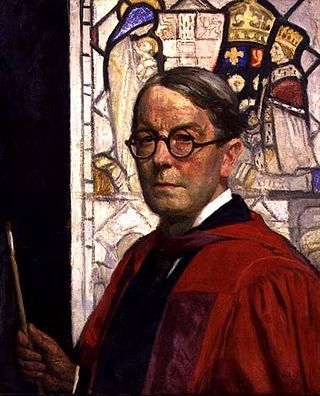
Robert Anning Bell was an English artist and designer.

Robert Burns, HRSA, RSW (1869–1941) was a Scottish painter, limner and designer. He was an early exponent of the Art Nouveau style in Scotland and an outstanding decorative artist.
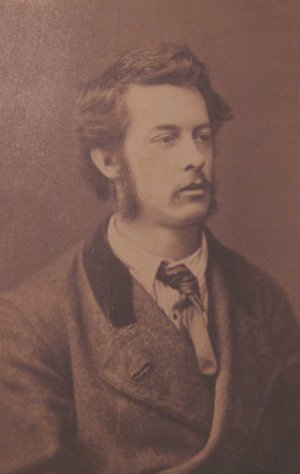
William Edward Frank Britten was a British painter and illustrator. It is known that he worked in London, England starting in 1873 and that he stayed in the city until at least 1890. Britten's work ranged in style from to traditional Victorian to Pre-Raphaelite, and his artistic medium ranged from paintings to book illustrations. His paintings have mostly been praised by critics with his illustrations having been treated as either neutral or favourable by reviewers.

William James Webbe was an early English Pre-Raphaelite painter and illustrator, known for his rustic, religious, and book paintings.





















